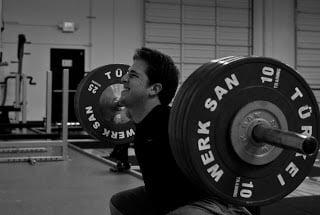
My first coaching mentor used to always ask our Cal athletes if they have ever seen a fat sprinter, followed by the same question regarding a jogger. His point was that these more intense activities, lifting weights and running fast, burn more calories and thus help keep body fat lower. Nutrition remains most important in affecting body composition, but exercises producing a greater EPOC, or excess post-exercise oxygen consumption, also play a part. This process is an increased rate of oxygen intake to help the body recover following activity, especially when it’s strenuous.
After exercise, oxygen is used in a variety of processes that restore the body to a resting state, including but not limited to, the hormone balancing, cell repair, and building muscle. This higher use of oxygen, or EPOC, causes greater fuel consumption by the body, so fat stores are broken down and released into the blood for fuel. A 1998 study out of Appalachian State’s Exercise Science Department by Dr. Burleson found that a weightlifting group produced a greater EPOC response than an aerobic exercise group that jogged on a treadmill. The authors suggested that the results were due to the greater global disturbance of the body from resistance exercise, and the resultant greater demand for recovery.
Some major disturbances found in higher intensity movements, like weightlifting and sprinting, include elevated blood lactate, and an increase in circulating catecholamines and anabolic hormones. Blood lactate levels are increased mainly in high intensity exercise due to the anaerobic nature of these movements (see Tabata). Catecholomaines, epinephrine and norepinephrine, are your fight or flight response. For example, when you are being chased by a tiger, you’re not going to jog. Anabolic hormones, such as testosterone, can be found in higher levels among anaerobic athletes.
Taking the above disturbances that occur from high intensity movements, our athletes take it a step further by training at the highest intensities. By lifting heavier weights and jumping on higher boxes, the fight or flight response is enhanced, as well as the lactate production and anabolic response. The only caveat is that these intensities take some time to develop in order to be performed safely.
So the next time you press manual start on that stationery bike or feel the need for more “cardio”, perform resistance training more frequently to allow yourself to eventually train at a higher intensity and provide a greater overall benefit. That tiger will never catch the lean sprinter before the jogger.